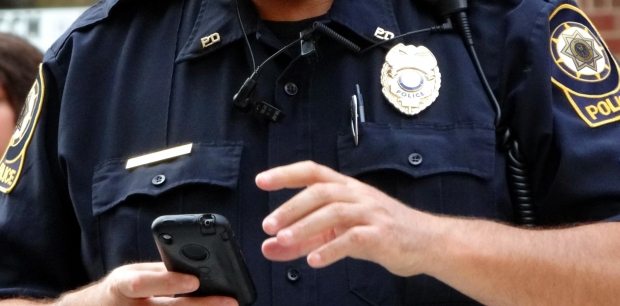You Actually Think Your Cell Phone Conversation is Private … LOL
Worried about government overreach? How about the pesky invasion of your privacy by law enforcement officials and agencies?
Does it bother you that the government has the capability to see practically every step you make and listen to nearly every word you speak? Or, does your next book need a cool high-tech twist? Yes or no, you might want to take a moment to ponder this bit of information regarding the government’s nearly insatiable quest to spy on … well, everyone.
- Homeland Security and the Justice Department have spent nearly $100 million on secret cellphone tracking technology. Together, the two agencies own more than 400 cell-site simulators that can be used to zero in covertly on the locations of cellphones. Covertly = the phone user has no idea that someone is secretly listening to their calls, and/or the same “spy” knows the location of each cell phone.
- The FBI has 194 cell-site simulators (see below for descriptions of cell-site simulators).
- The U.S. Marshals Service has 70.
- U.S. Immigration and Customs Enforcement has 59.
- U.S. Customs and Border Protection has 33.
- The Drug Enforcement Administration has 33.
- U.S. Secret Service has 32.
- The Bureau of Alcohol, Tobacco, Firearms and Explosives has 13.
- The Internal Revenue Service Criminal Investigations division has two.
- The Treasury inspector general has one.
- Some of the devices are small enough to use in vehicles, meaning that as the “spy” drives through a neighborhood, he can collect phone data from every user he passes.
- Nearly $2 million in grant money has been awarded to local law enforcement agencies specifically for the purpose of purchasing cell-site simulators.
- Currently, federal policy requires that all federal law enforcement officials obtain a warrant prior to utilizing a cell-site simulator. However, the rule does not apply to local police, who may freely use these devices.
- Current law requires nondisclosure agreements that require prosecutors to abandon criminal charges rather than disclose local police use of cell-site simulators. A bipartisan reports indicates a need to eliminate this nondisclosure agreement.
- A bill has been introduced to mandate that all law enforcement agencies, including local police, obtain a warrant prior to utilizing a cell-site simulator.
The costs of these devices range between a few thousand to $800,000, each.
1. Cellbrite Battlefield Recovery – a portable handheld device used to suck a device/phone dry of its data. Extracts photos, text messages, videos, and call logs. You could purchase this cool thingamajig for $9,920, plus a 1 year fee of $900 to cover support and maintenance.
2. Raven – used to interrogate and geolocate target phones. *To interrogate a phone means to trick the target phone into sending its identifiers. Geolocate is to determine the location of a target phone. The Raven can be utilized from fixed wing aircraft or on the ground. The Raven price tag is a modest $800,000.
3. Blackfin – for listening in on calls and viewing text messages. For the low, low fee of $75,000, you, too, can own one these little darlings.
4. DRT (aka “dirt box”) – targets and locates up to 10,000 devices (phones) and tricks them into “thinking” the DRT is a cell tower. DRT then collects and analyzes data, including voice data. Can be used from aircraft or ground. DRT, a soup-up version of the Stingray, has the capability of capturing data from up to 10,000 devices during a single flight/operation. DRT = $100,000. Stingray = $134,952.
5. Stargrazer III – locates devices, captures their data, and jams their signals preventing users from making and receiving calls.
6. Thoracic – handheld cell phone tracking device. Pinpoints location of target phones. $7,500.
*It is believed (it’s true, but you didn’t hear from me) that devices such as the Stingray and DRT are capable of intercepting private conversations by using the person’s cell phone as a “bug.” Simply use the phone’s firmware remotely and it’s like becoming the “fly on the wall.” Some of you may remember the old party-lines where you could pick up your receiver and listen in on the conversations of your neighbors? Yeah, it’s like that.
Spies Are Listening!
If our law enforcement agencies are using these devices, well, foreign spies are most likely using them too. If so (and I’m 99.999999% sure they are), foreign governments are intercepting and listening to U.S. cell phone calls and text-type messages.
Party Lines
Isn’t it funny how we’ve traveled full circle, from people wanting to move away from party line phones because they weren’t private, to sophisticated cell phone technology that requires expensive high-tech equipment and resources to transform our newfangled and complicated gadgets back into party line phones.
*By the way, there’s practically no end to the surveillance citizens are subjected to each day. For example, We-Vibe, the sex toy maker, has agreed to pay customers up to $7,600 each for selling them a “smart vibrator.” Not a big deal you say? Well, these “toys” tracked the customers’ sexual habits without their knowledge.
The device comes with an app-enabled function that allows the “item” to be remotely activated and controlled. However, security flaws within the app allowed anyone within Bluetooth range to gain control of the device. The app also collected information such as the temperature of the device, the vibration intensity, the number of times it was in use, etc. This extremely personal data was immediately sent to the manufacturer.
So yeah, “they” are watching and listening.
Are we ever truly alone?





Fascinating. If it catches bad actors, I’m for it. The problem might be how collectors evaluate the information. After researching poisons for four books, I’m waiting for the feds to give me a call.